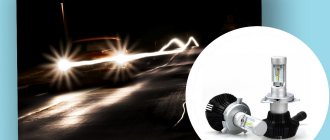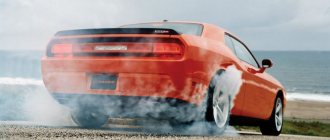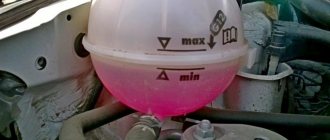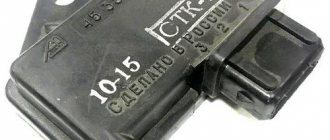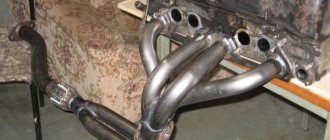What is the difference between 92 gasoline and 95
In fact, not everyone can immediately answer the question of what is the difference, for example, between 92 and 95 gasoline. And the difference is in the special additives that increase the octane number and their quantity.
Let’s not get bogged down with chemical formulas now, but simply take everything as it is. Octane number is the resistance to detonation.
The higher the octane number of gasoline, the greater its resistance to self-ignition during compression.
The engine of each car is designed for a certain compression ratio. For example, engines of the domestic automobile industry have the following indicators: from 9.0 to 9.9. These indicators correspond to 92nd gasoline. That is, with such a compression ratio, 92nd gasoline is guaranteed not to ignite itself.
No. 1. What does the instructions say?
Most manufacturers today require AI-95 gasoline and higher. The more “democratic” ones also allow “ninety-second” to be poured. For example, for Vesta the optimal choice is AI-95. If you fill it with AI-92, you will lose a little in dynamics and efficiency. If you buy AI-98, you will overpay, but you won’t feel the difference with “ninety-five” gas stations. Therefore, I am impressed by the instructions, for example, like Volvo: the main gasoline is AI-95, in extreme heat (to eliminate the risk of detonation) fill in “ninety-eighth”, and in extreme cases AI-92 will do.
Is it possible to fill in 92 gasoline instead of 95
By and large, nothing will happen. 95 gasoline has a higher octane number than 92. This guarantees that it will not ignite in the combustion chamber itself, only after a spark is given. But many people think that by filling in 95 gasoline instead of 92, you can increase the power of the car. On the contrary, there will be losses.
Other car enthusiasts are confident that pouring 95 gasoline into a car instead of 92 gasoline can cause the cylinders to burn out. In fact, the electronic units of modern cars are capable of, so to speak, adjusting the operating mode. However, it is still not recommended to skip over the brand. The ECU of each car is designed to operate within a certain range. If you need to fill your car with 92, you shouldn’t fill it with 98.
Reverse situation
We figured out whether it is possible to fill in 92 gasoline instead of 95, but what about the opposite situation? There is a misconception among drivers that 95 gasoline will allow an engine designed to work with 92 gasoline to operate more efficiently. But in fact, the opposite situation is also harmful for the engine, since the mixture will be ignited late, and this can cause the same negative consequences.
Note that modern cars are quite smart and have systems for automatically adjusting engine operating parameters to the changed octane number of fuel. True, the change is possible within a small range. The “brains” of the car monitor:
- Detonation.
- Engine speed.
- Composition of the air-fuel mixture.
- The moment of ignition of the mixture.
If necessary, engine operation will be adjusted by the electronic control unit. But it is worth noting that the operation of this unit is limited, and if the difference in octane numbers is large, then it will not help.
Almost all modern cars can be filled with 92 or 95 grade gasoline, since the difference in octane numbers does not exceed 3%. However, this cannot be done systematically under any circumstances. There are situations when the driver has an empty tank, and the gas station does not have the fuel he needs. In this case, it is permissible to fill in a small volume of unsuitable gasoline.
What happens if you fill in 95 gasoline instead of 92?
I recommend not checking. Remember octane rating? What happens if it is lower than the pressure in the combustion chamber? A detonation will occur, which will not lead to anything good. The valves will begin to knock, the engine will become dull and capricious. As a result, there is a high probability of getting into capital. Of course, the ECU will try to smooth out the damage, but if it fails, then you will not be able to count on warranty repairs.
Important ! Mixing 92 and 95 gasoline does not produce “93”
That is, “different octane” brands do not mix at all. The lighter 95 rises to the surface, while the 92 remains at the bottom of the tank. What conclusion can be drawn from this? You need to pour the type of fuel recommended by the manufacturer.
But what about diluted gasoline? There is nothing you can do here except refuel at well-known and trusted gas stations.
There are many opinions and myths on the Internet about domestic gasoline. For a long time now, rumors began to spread on the Internet that 95 gasoline is generally a myth, that in fact, drivers buy 92 gasoline, but with additives.
And many drivers believed this, switching completely to the 92nd. Is it really worth ignoring the manufacturer's recommendations in this regard?
In general, the opinion is not entirely correct. It's true that there are certain cars that don't care whether they run 92 or 95. But for the most part, you should strictly follow the manufacturer's recommendations.
It is enough to fill up with the wrong gasoline once to notice that the car is “sneezing.” Then the driver begins to complain - everything possible is clogged.
The myth that 95 gasoline does not exist is reminiscent of the story that summer and winter tires are the same thing. Just a marketing ploy to squeeze money out of drivers.
Any experienced driver understands that this is complete nonsense. And if he doesn’t understand, he will understand after an accident or skidding on ice while driving on summer tires.
Are there savings?
When drivers argue about whether it is possible to fill in 92 gasoline instead of 95, they often use saving money as an argument. In fact, the savings are so tiny (1-2 rubles per liter) that they practically do not exist. On average, a driver can save 3-4 thousand rubles per year (with a mileage of about 15,000 km). However, systematic use of the “wrong” gasoline may lead to loss of the right to warranty repairs. Many car owners were denied warranty service after analyzing the fuel used. Therefore, savings of 3-4 thousand rubles can ultimately result in a large amount spent on major repairs of the cylinder-piston group of the power plant.
What is the difference between AI-92 and AI-95
92 and 95 - what do these numbers even mean? This is the octane number of gasoline. When the number is higher, gasoline can withstand more compression in the cylinders.
Explaining in simple language. The manufacturer says that you need to refuel at 95. You refuel at 92. As a result, instead of combustion at maximum compression, the following occurs - detonation of the fuel in the cylinders.
Drivers most often encounter this problem at high engine speeds. But this does not mean that it is worth taking risks and creating extreme situations for yourself and your car.
Now briefly about additives. In general, you should forget about the existence of such a term as “natural gasoline”. 92 and 95 are obtained from gasoline that has an octane rating of at least 80 (which should be obvious). Gasoline is not a food product, where the fewer additives, the better the food will be absorbed.
We recommend that drivers take greater care to ensure that their cars run on high-quality gasoline. For fuel to be of high quality, normal additives are required. And now the big question is where to find a reliable gas station. Even at chain gas stations, you may encounter the fact that after refueling, the engine begins to make noise towards the end of the tank.
So, 95 is actually obtained with the help of additives - and this is normal for fuel. Yes, additives can be unsafe for the engine. However, only if the gasoline itself is of poor quality.
There is an opinion that the higher the octane number, the better the fuel. In fact, this is not entirely true, because the same 98 or 95 gasoline is made on the basis of 92. The only difference is that more additives and additives are used there, due to which the octane number increases.
Therefore, we can conclude that 92nd gasoline, which almost all cars use now, is much cleaner, but the problem is that it is now difficult to find high-quality fuel.
Most manufacturers leave an information plate on the inside of the gas filler flap.
Consequently, this car can be filled with both 95 and 98 gasoline, because The car is designed for this type of fuel.
Fuel parameters
Octane number is considered a key parameter when it comes to fuel used in the Russian automotive industry. The characteristic under consideration is designed to determine how much the fuel can resist ignition at the moment of compression, that is, the tendency to detonate is established. The fuel detonation threshold is directly proportional to the indicator under consideration.
You can learn more about what the octane number of gasoline is from the article by our specialist.
Additionally, we recommend reading our author’s material on how to choose the right gasoline cans.
The logical conclusion from the information provided is: if the engine is designed to run on AI 95 gasoline, systematically ignoring this fact and refueling with inappropriate fuel leads to rapid wear of the engine as a whole and its individual elements. The frequency of spontaneous combustion will be excessive.
Octane number
When studying the properties of fuel, it is also important to take into account the technology used in processing petroleum products. Direct processing allows you to obtain a product with an octane number of 60. To increase this parameter, various techniques are used, including hydrocracking, thanks to which it is possible to increase the required characteristic by 15 units.
Types of additives
It is customary to distinguish between the following types of additives, which differ not only in their effectiveness of use, but also in their safety of use:
- Lead-based additives , otherwise known as metal-containing additives, were in demand during the Soviet Union. Leaded gasoline acted as a finished product. Despite the effectiveness of their use, they were soon banned for use because the harmful emissions into the atmosphere were too significant.
- Additives with ferrocenes (iron compounds) or manganese compounds are considered less dangerous , however, certain restrictions are imposed on their use. Manganese compounds tend to decompose when exposed to light, which leads to a decrease in the fuel's resistance to spontaneous combustion. Ferrocenes, in turn, provoke the formation of layers of soot and resins, which negatively affect the cleanliness of the engine.
- Alcohols and ethers in the base of additives are optimal components from the point of view of environmental impact, but their octane number is relatively low and is only 120, while in the case of metal-containing additives we are talking about 280. As a result, it is necessary to achieve a higher specific content of such additives in fuel – up to 15%. If we are talking about the disadvantages, it is worth continuing with such an unpleasant side effect as high volatility. Consequently, fuel based on such additives must always be fresh, and its long-term storage is not possible.
Having studied the information about the additives used and their effect on the petroleum product and the environment, we can begin to consider the possibility of replacing 95 fuel with AI-92 gasoline.
Is it possible to mix gasoline 92 and 95
If you mix 92nd gasoline with 95th or 98th, then in the tank, when mixed, fuel with a lower octane number will be lower.
This can be explained by the fact that gasoline has different densities, so no matter how well you want to mix it, the output will still be the same. Such experiments have virtually no effect on dynamics, speed, or control.
If the manufacturer recommends using 92 gasoline, then you can also fill your car with 95 or 98, for example, but not vice versa.
Problems can begin with the engine due to the fact that fuel with a higher octane number has a lower combustion temperature.
The consequences can be very dire, including burning out of engine parts. As a rule, this does not apply to modern engines.
92, 95 or 98 don’t mean anything to an ordinary person, but for a car enthusiast the eternal question: “Which gasoline is better to fill in? 92nd, 95th, or maybe 98th?
So that the car can work better and so that it doesn’t hurt your pocket too much, especially if the car is always in motion.
92, 95, 98 is the octane number. Those. The higher the compression ratio of your car's engine, the higher the octane number you can fill with gasoline.
Octane number (from [iso]octane) is a chemical indicator of standard straight-run gasoline, equal to the content (in percent by volume) of isooctane (2,2,4-trimethylpentane) in its mixture with n-heptane. For commercial gasoline, it is used as a comparative reference indicator characterizing the detonation resistance of the fuel under study (the ability of the fuel to resist self-ignition during compression) for internal combustion engines with spark ignition. source ru.wikipedia.org
IMPORTANT!!! You need to fill in the gasoline recommended by the manufacturer.
Often in the service book or in the car manual there is information about what gasoline to fill. Also, some manufacturers leave a sign on the inside of the gas tank flap, helping modern drivers fill with gasoline that meets the manufacturer’s requirements.
If the use of 92 is allowed, then 95 can also be poured. Nothing bad will happen.
Owners switching from 92 to 95 get the impression that the car drives faster and consumption decreases. And this is true for the majority.
Although the 95th costs more than the 92nd, overall there is a saving, and plus there is additional power.
But the 98th is no longer recommended to be used often, except in exceptional cases to “burn through” the combustion chamber.
It is logical that if gasoline brands differ in number and price, then there is some practical meaning in this.
Why are drivers afraid to put the “wrong thing” in the tank, what could be the consequences? And does this mean that one gasoline is worse and the other is better? There are some “basics” that it is advisable for the driver to know.
Octane number
An indicator such as octane number (OC) determines how much an engine, when using a certain type of gasoline fuel (PG), can resist detonation. The higher the number indicated in the gasoline brand, the better the fuel resists self-ignition, and can be used in forced engines with a high compression ratio in the cylinders.
Now in Russia there are three types of BT used - these are AI-92, AI-95 and AI-98. Until recently, A-76 gasoline was also in use (even earlier A-72 and A-66), and the Ai-80 brand is produced only by order. But it’s not for nothing that low-octane fuel has disappeared from gas stations: it does not allow achieving high power from the engine, the efficiency is low, and the content of toxic substances in the exhaust gases does not meet current environmental standards.
More expensive means better?
There is an opinion, especially among girls, that the 95 is the best choice for most cars. The arguments are as follows: because it has a higher octane number, it means it is “cleaner”, and therefore more expensive.
But this is a completely philistine and illiterate view. Especially regarding “cleaner” - the number of additives in expensive gasoline is simply enormous.
Detonation
Indeed, the number in the name of gasoline is the octane number. The higher it is, the better the gasoline resists detonation.
The word "detonation" is alarming, but it simply means the process of spontaneous combustion: a shock wave plus a chemical combustion reaction that support each other.
Gasoline, as we know, is a flammable liquid, and it must flare up in the cylinder at the right moment so that the stroke of the crank mechanism (CPM) is ensured in the specified mode. If the ignition of the fuel-air mixture occurs too early, even before the spark plug ignites it, then they say that detonation has occurred.
Of course, it is possible to drive with detonation, but large shock loads and high gas temperatures quickly wear out the entire crankshaft. A burnt-out piston, spark plugs falling into the combustion chamber and torn connecting rods will make themselves known after some time.
Toyota Corolla 2004, 110 l. With. - observation
Cars for sale
Toyota Corolla, 2004
Toyota Corolla, 2005
Toyota Corolla, 2006
Toyota Corolla, 2001
Comments 16
I also came across this issue, surfed a bunch of forums, and came to the conclusion that it doesn’t matter to her what kind of gasoline she eats, it’s already about 50 thousand. I drive 92, there are 0 changes.
I mostly use Corolla 95 because that’s what the instructions say. After all, there is less detonation...
The knock sensor solves the problem with detonation
I have 95 more consumption on the CUBA, but the engine sounds quieter ((
I pour it whenever, from 92 to 98, it eats everything and doesn’t even slurp...
In Russia, 95 is almost entirely filled with Chinese additives! High-quality gasoline goes to the west. I fill up with 92, and use 95 for BP...the quality is certainly noticeable. At other gas stations I didn’t feel any difference from 92 - 95(
My dad bought an Avensis at the dealership and they told him that it was only 92, since it is 92, and there is no 95 beyond the Urals :-). So together we all pour 92 from Sibneft and that’s it.
I think everything is somewhat more complicated there... Like the compression ratio and the octane number for this compression ratio. In short, you need to pour what the manufacturer recommends - then everything will go as expected)
better than 92, we also kind of need to pour 95, but you can pour 92, we pour 92, mostly few people use it, 95 is used more often
I can't get it to work at 92...
strange... in theory 92 is better, but I realized she just somehow needs to fill in a little 92 when the duck is empty and let her drive it, the computer will change to 92 and it will crash, she was just given that way out of habit
or vice versa, fill in 95 and 92 then the computer will quickly adjust and will even run at 92 =)
Car manufacturers indicate in the accompanying documentation the brand of gasoline recommended for this vehicle. Two brands are indicated, for example, the recommended gasoline is A-95, and the acceptable gasoline is A-92.
Let's consider how important it is to use a brand of fuel with a high octane number, and what the consequences of refueling with low-quality gasoline will be.
What happens if you fill in 92 gasoline instead of 95?
A lower number means faster ignition. Here’s the thing: 92 will ignite faster and more readily, and 95, compared to it, is “slow” gasoline.
During the compression process, the gases heat up - everything is like in a physics textbook, and the piston begins to compress the fuel mixture. The 92nd will not “tolerate” for long, it will ignite. And 95 is better able to prevent detonation, so it will ignite much later.
Filled into “its own” engine, each of these gasolines will ignite at the ideal moment provided for by the design.
Operating principle of the power plant
Some, especially novice car enthusiasts, when they stop at a gas station, cannot decide what the numbers at the gas station mean. To understand the peculiarities of labeling different types of fuel, you need to understand the operating principle of the power plant, which is as follows:
- a fuel charge of gasoline and air is pumped into the cylinders of the car engine;
- when the piston moves upward, the fuel mixture is compressed;
- with strong compression, the fuel charge ignites and pushes the piston in the opposite direction.
This is the standard operating rhythm of the power plant. The main thing is that the finished fuel mixture ignites when a spark is supplied from the spark plugs. In the event of detonation and spontaneous ignition, the pistons move in the opposite direction before the required time. This leads to severe engine wear and, as a result, expensive repairs.
Which gasoline is better to fill in 92 or 95
If in our thought experiment we go even further and imagine that we filled the tank for 95 with 76 gasoline, then the picture will be even more clear: you “step on the gas,” but the car doesn’t move. This is because gasoline is ready to spontaneously ignite instantly, but the sensors stubbornly extinguish detonation.
The driver does not give up and continues to torture the car, which means that the engine will soon turn into trash. The pistons will be the first to suffer, because the mixture that ignites at the wrong time will hit them and prevent them from “moving” upward.
What happens if you do the opposite? That is: pour high-octane gasoline into an engine designed for a lower class of gasoline?
A fuel mixture that is resistant to detonation will ignite later than necessary; combustion will occur not only in the chamber - afterburning will also continue during the exhaust. Exhaust valves - eternal memory.
Those who “practised” such a replacement, either by mistake or for the sake of experience, were very dissatisfied: when “cold” the engine stalled, starting only on the second or third attempt, until it warmed up completely. In general, until they burned the entire tank, exhaled joyfully, and did not engage in such nonsense anymore.
Production technologies
The quality of gasoline is regulated by technical regulations, which list what should not be present: metal-containing additives based on iron, manganese and lead and additives based on methanol.
To obtain high-octane gasoline from oil, different technologies are used, but only one allows obtaining octane numbers up to 99. The rest are produced using less complex technologies. This is where various octane-boosting additives and additives arise. They can be divided into three groups. The first is based on the use of metal-containing additives - tetraethyl lead, which is banned in many countries around the world, including in Russia. Ferrocene replaced it. If the engine contains a large dose of ferrocenes (iron-containing additives), then the iron hood will come first to the spark plugs. The oxygen sensor will fall second, and its death will be followed by the premature death of the catalytic converter.
Another group of high-octane additives works on the principle of a “mixture” increase in octane number: base gasoline is mixed with something very stable. More often they use monomethylaniline (MMA), whose octane number is 280. These gasolines are more expensive than ferrocene ones, but the main obstacle is Euro IV standards, which limit the level of “aromatics”. The third group is ethers and alcohols. Everything is fine with the environment, but there are problems. Firstly, the octane number is relatively low - about 120, so quite a lot of them are required - sometimes more than 10%. Secondly, esters are aggressive towards rubber, paint, and some plastics. It was the aggressiveness of the esters that required limiting their concentration to 15%.
The terrible enemies of car enthusiasts include MMA and MTBE. The use of these additives in the production of gasoline is allowed, but with strict dosage. An MTBE content of more than 15% leads to a drop in engine power and corrodes seals in the fuel system. MMA (no more than 1%) is allowed in fuel up to class four and has been banned since 2016.
Conclusion
Each engine is designed by its designers for a certain moment when the fuel should ignite, and it corresponds to a specific octane number of gasoline.
Expensive high-octane gasoline is neither better nor cleaner. It's just designed for modern engine models, and everything new and fashionable is usually more expensive than outdated ones.
It is recommended to fill modern “high-speed” engines with fuel of a class not lower than AI-95. Brands 98, 100 are even more preferable.
“Slow” high-octane gasoline will burn evenly throughout the entire piston stroke. This way it does a great job without causing a shock wave to the piston, connecting rod and crankshaft.
Consequences of refueling a car with low-octane fuel
Let's consider what can happen if the car is filled with, say, AI-80 gasoline instead of 92. On fuel with an octane rating significantly lower than the recommended one, the engine “chokes” and begins to work noticeably worse:
- power is lost;
- dips appear when accelerating the car;
- detonation occurs (they also say “fingers ring”);
- The engine starts to smoke (black smoke comes out of the muffler pipe).
It is still allowed to drive a certain distance in such a vehicle if the situation is hopeless, but the car cannot be used for a long time. The constant use of gasoline with low OC leads to very disastrous consequences:
- The piston partitions are destroyed, and piston burnout often occurs;
- the piston rings are stuck, resulting in bluish smoke appearing from the muffler pipe, and oil consumption increases noticeably;
- the catalyst clogs quickly;
- Spark plugs fail prematurely.
The difference between octane numbers 92 and 95 is not so noticeable, however, it is there. If the manufacturer recommends filling with AI-95, then you need to adhere to the instructions; the consequences of mismatching the fuel grade will still manifest themselves someday.


